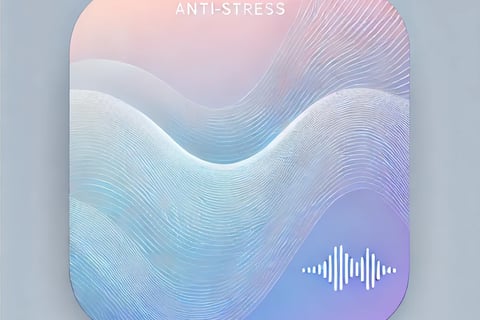What Role Does Student-Teacher Communication Play in Stress Management?
"Explore the vital role of student-teacher communication in stress management. Discover how effective dialogue fosters supportive relationships, enhances academic performance, and equips students with essential coping strategies to navigate academic pressures."
STUDENT STRESS
10/25/20246 min read
Audio Summary
In the ever-demanding landscape of academia, students frequently encounter various stressors that can significantly affect their mental well-being and academic performance. What role does student-teacher communication play in stress management? The answer lies in the ability of effective communication to foster supportive relationships, provide essential guidance, and create an environment where students feel heard and understood. This article explores how constructive communication can alleviate academic stress and enhance students' overall educational experience.
Effective communication is critical in addressing issues highlighted in various areas of student life. For instance, in the realm of coping with academic pressure and the stress management tips for students, open dialogues between students and teachers can offer vital support and resources tailored to individual needs. Additionally, fostering these relationships can help students develop strategies for beating exam anxiety and exploit some practical techniques for staying calm, which may involve teachers providing extra resources or time for students struggling with their studies.
Moreover, understanding the significance of communication can aid in balancing study and social life and thus reduce stress in college. Teachers who actively engage with their students can better understand their challenges, enabling them to guide students in finding that crucial equilibrium between academic and personal commitments. Furthermore, such supportive environments play a crucial role in building Resilience and managing stress in a competitive World. When students feel supported, they are more likely to develop the skills necessary to navigate pressures effectively, reducing the risk of burnout and enhancing their overall academic performance.
In summary, fostering effective communication within educational settings is not merely beneficial; it is vital for helping students manage stress and succeed academically. By focusing on nurturing open lines of dialogue, educators can play a transformative role in their students' lives, paving the way for healthier coping mechanisms and a more positive academic experience.
The Impact of Effective Student-Teacher Communication on Stress Management
What role does student-teacher communication play in stress management? Effective communication is a cornerstone of successful student-teacher relationships. Research shows that when teachers communicate clearly and compassionately, students experience reduced anxiety and improved academic outcomes.
According to one study, students who feel supported by their teachers are more likely to seek help when needed, which can mitigate feelings of stress and isolation. When teachers are clear about expectations and provide regular feedback, students can navigate their academic responsibilities with greater confidence.
In a world where academic pressure is ever-increasing, the importance of communication cannot be overstated. One study highlighted that effective communication is linked to higher student engagement, which in turn correlates with lower stress levels. When students feel they can approach their teachers with questions and concerns, they are less likely to become overwhelmed.
Building Trust and Approachability in Student-Teacher Relationships
Creating a trusting environment is essential for effective communication. Students are more inclined to reach out to teachers they perceive as approachable and caring. Is it emphasized that a trusting relationship fosters better learning outcomes and enhances student engagement. Small gestures, such as greeting students by name or checking in on their well-being, can go a long way in establishing this trust. When students feel that their teachers care about them, they are more likely to share their concerns, whether they relate to academic pressures or personal challenges.
One survey conducted found that students who have positive relationships with their teachers report higher levels of well-being and lower levels of stress. This finding suggests that the emotional support provided by teachers plays a crucial role in students' overall mental health. When teachers invest time in building rapport with their students, it lays the foundation for open communication.
Active Listening: A Key Component of Communication
Active listening is an essential skill for teachers looking to support students experiencing stress. When teachers listen attentively and respond empathetically, students feel validated and understood. A research indicates that such empathetic approaches can lead to improved student well-being and classroom dynamics. By fostering a classroom atmosphere where students feel comfortable expressing their thoughts and emotions, teachers can help reduce anxiety and promote resilience.
Incorporating active listening into classroom interactions can be transformative. Teachers can practice reflective listening, where they paraphrase what a student has said to demonstrate understanding. This technique not only validates the student's feelings but also encourages further communication. One other strudy emphasizes that when students feel heard, their academic performance and emotional well-being significantly improve.
Constructive Feedback: Encouraging Growth and Reducing Stress
Providing constructive feedback is another vital aspect of effective communication. Rather than merely identifying errors, teachers can highlight students' strengths while offering guidance for improvement.
One article discusses the effectiveness of positive reinforcement in educational settings, noting that this approach can enhance student motivation and engagemen. For example, teachers might use a "feedback sandwich" method—starting with positive comments, followed by constructive criticism, and concluding with another positive remark—to create a supportive feedback environment.
Moreover, a report by the Institute for Educational Sciences highlights that timely and specific feedback leads to better learning outcomes and lower stress levels. When students understand where they stand and what they need to improve, they can approach their studies with clarity and focus. This proactive approach to feedback not only reduces stress but also fosters a growth mindset among students.
Creating a Safe and Inclusive Classroom Environment
A safe and inclusive classroom is fundamental for fostering effective communication. When students feel secure, they are more likely to express their concerns without fear of judgment. Establishing clear expectations for behavior and communication can help create a structured atmosphere that promotes respect and understanding. Furthermore, integrating discussions about mental health into the curriculum can normalize these conversations, making it easier for students to approach teachers with their concerns.
Creating an inclusive environment also means acknowledging diverse backgrounds and experiences. A study found that culturally responsive teaching practices enhance student engagement and reduce stress among students from diverse backgrounds. By embracing diversity and promoting inclusivity, teachers can create a classroom where every student feels valued and supported.
Encouraging Peer Support: Building a Community
Facilitating peer relationships is an effective strategy for promoting student well-being. A sense of community within the classroom can help alleviate feelings of isolation among students. A research underscores the benefits of peer support in reducing student stress levels . By organizing collaborative activities or group discussions, teachers can encourage students to share their experiences and challenges, fostering empathy and support among peers.
Peer mentoring programs are also an effective way to build community and support. Another study found that peer mentoring can significantly reduce stress and increase academic performance among students. When students feel they have a network of support, they are more likely to approach their studies with confidence.
It is expected that a student has an open relationship with his teacher. There are several reasons which govern the necessity for such approach.
Namely, the materials may be overwhelming. Also, a student may be a step behind in the absorption of the data and facts that need to be memorised and afterwards reproduced. Also, a situation may occur in which a student is put down by other fellow students due to a competitive environment. Moreover, it is especially important to note that students have their doubts and fears on their ability to master some matter.
All these factors together contribute to the fact that student-teacher communication has its role in studying and that the support that teachers may provide has the ability to alleviate stress that occurs.
Practical Strategies for Enhancing Student-Teacher Communication
Utilizing Technology for Communication
In today's digital age, technology can play a crucial role in enhancing student-teacher communication. Online platforms, such as Google Classroom or Microsoft Teams, allow for seamless communication and feedback. Teachers can create discussion boards or forums where students feel comfortable sharing their thoughts and questions, reducing feelings of isolation and promoting a sense of belonging. According to one research, these tools can significantly enhance student engagement and foster a collaborative learning environment.
Moreover, using communication apps can keep parents informed about classroom activities, further enhancing the support network for students. Another study frindicates that when parents are involved in their children's education, students experience lower levels of stress and higher academic achievement.
Encouraging Student Feedback
Another effective way to improve communication is to actively seek feedback from students. By creating anonymous surveys or suggestion boxes, teachers can gain insight into how students perceive their teaching methods and communication styles. This feedback allows educators to adjust their approaches to better meet students' needs and foster a more supportive learning environment. A study emphasizes that when students feel their voices are heard, they are more likely to engage positively in the learning process.
Additionally, regular check-ins can provide students with opportunities to voice their concerns and suggestions. This practice can be as simple as a weekly feedback form where students can express their feelings about the classroom environment and teaching methods. Such initiatives help create a culture of open communication and continuous improvement.
Conclusion: The Transformative Power of Communication in Academic Stress Management
In an academic environment where students often face overwhelming pressures, effective student-teacher communication is crucial for stress management. By emphasizing clarity, building trust, actively listening, and promoting peer support, educators can create a nurturing environment that empowers students to confront and manage stress effectively. The positive outcomes of such communication extend beyond academic performance; they also contribute to students' overall mental health and resilience.
Prioritizing student-teacher communication is essential for helping students navigate the complexities of academic life. By fostering understanding, support, and empathy, educators can significantly enhance the educational experience, leading to more resilient, engaged, and successful learners. As research continues to highlight the importance of effective communication, educators must commit to building strong, supportive relationships with their students to foster a positive learning environment.
In conclusion, the role of student-teacher communication in stress management is not just about passing information—it's about creating an environment where students feel supported, understood, and empowered to thrive academically and personally. Emphasizing this aspect of education will contribute to a more holistic approach to student well-being, paving the way for healthier, more engaged, and academically successful students.


